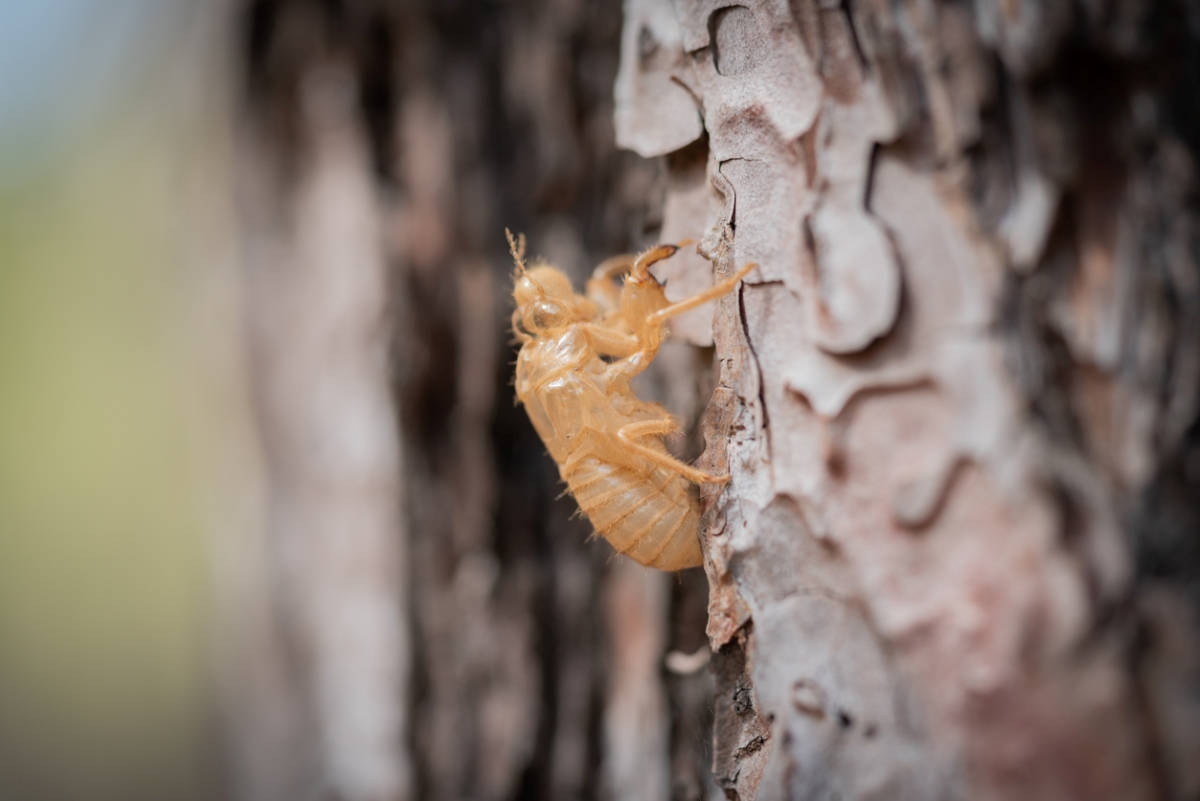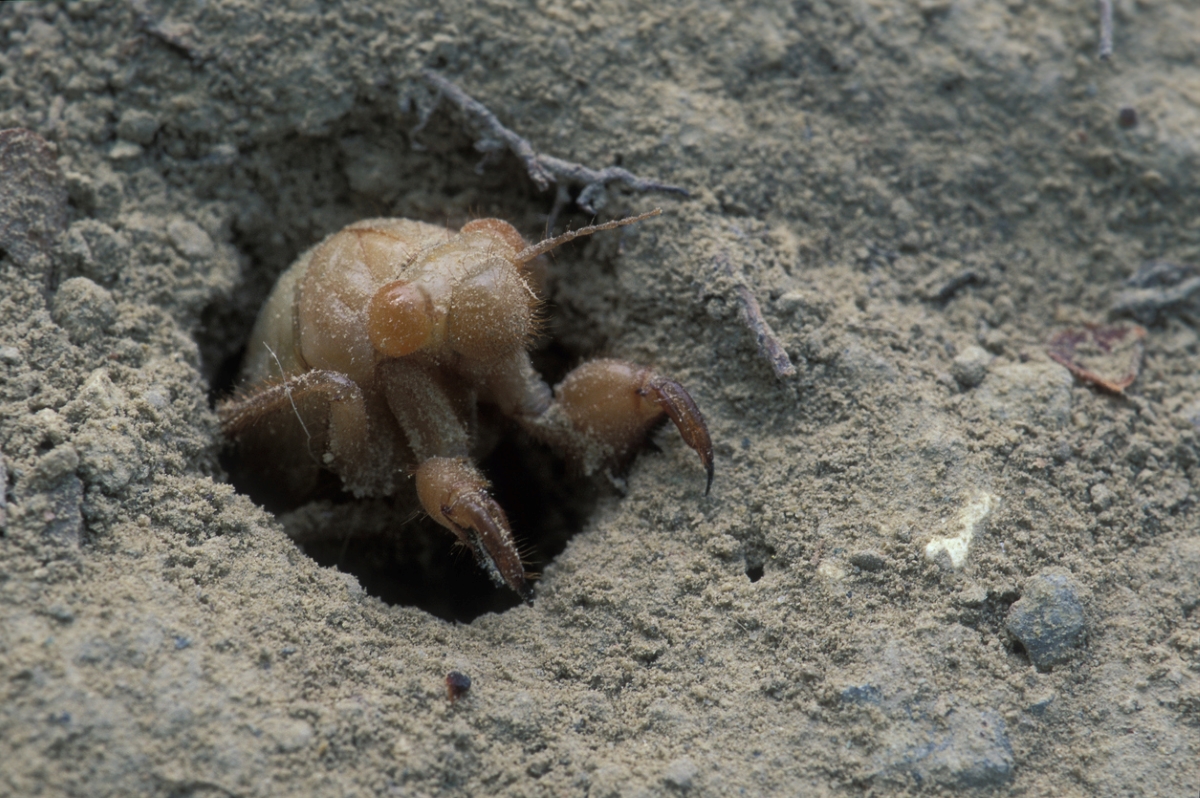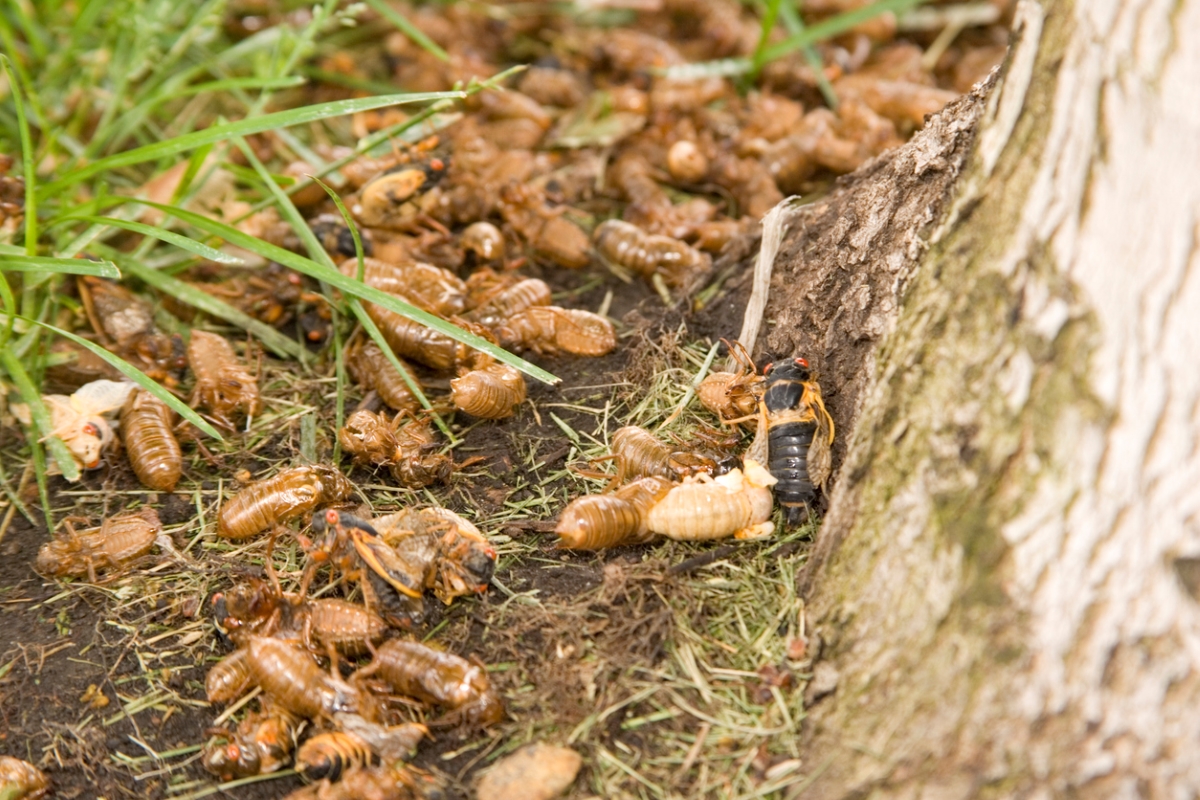

We may earn revenue from the products available on this page and participate in affiliate programs. Learn More ›
It’s officially cicada season—and the first time in 221 years that these specific broods of 13-year cicadas and the 17-year cicadas will emerge at the same time in particular areas. These large, winged insects with thick bodies are known for their loud buzzing, spraying pee in high-speed streams, and for depositing their exoskeletons on trees, shrubs, fence posts, and other locations.
However, while periodical cicadas can be a nuisance, they are generally harmless. In fact, there are some benefits to be had from putting up with the noise and disruption caused by Broods XIX and XIII this year.
Biological Soil Aerators

Cicadas spend virtually all their lives underground, emerging only to shed their exoskeleton and mate. After the eggs hatch, cicada nymphs burrow 8 feet deep into the ground. When it’s time for them to emerge—whether annually, every 13 years, or every 17 years—they tunnel up through the soil. This creates pathways for rain and air to penetrate, essentially aerating your lawn, reducing soil compaction and bringing crucial nutrients to tree roots and permitting easier oxygen transfer and better soil oxidation.
Food Source for Wildlife
If you haven’t used an insecticide or other poison on cicadas, they can serve as a significant food source, says Emma Grace Crumbley, entomologist at Mosquito Squad, a pest control service with franchises nationwide. Birds, bats, rodents, insects, and other animals enjoy a high-protein cicada snack.
Nature’s Tree Pruners
Before cicadas lay eggs, females use their ovipositor,”a long, saber-like organ on the lower half of their abdomen, to cut slits in (typically) small branches. Over time, these branches die, break, and fall off. While some gardeners might not be happy about the pruning “help,” there is a bright side.
This natural pruning can benefit trees by opening up the interior of a tree, allowing more sunlight and air to circulate, contributing to a healthier crown, and generating additional growth that can result in more flowering or fruit, Crumbley says.
Soil Enhancers

As they decompose, the bodies, exoskeletons, and waste left behind by the cicadas “enrich the soil with essential nutrients like nitrogen and carbon,” according to Crumbley. The buggy bodies contain 10 percent nitrogen, adding more of this crucial nutrient than any foliage compost to provide “a significant nutrient boost to the soil,” she says. Scientific reports indicate that the dead insects boost vegetation growth and contribute to tree growth for several years. The chitinous material from their bodies adds texture to soil.
Contributors to Compost
If the brood emergence of cicadas is too immense to let their remains decay in place, you can collect them and add them to a compost pile or bin. Remember that a successful compost pile mixes wet, nitrogen- or protein-rich material (greens) with dry, carbon-rich material (browns). Cicadas would constitute the greens. If there’s a substantial amount of them, it would be necessary to add leaves or another type of browns for a balanced mixture.
